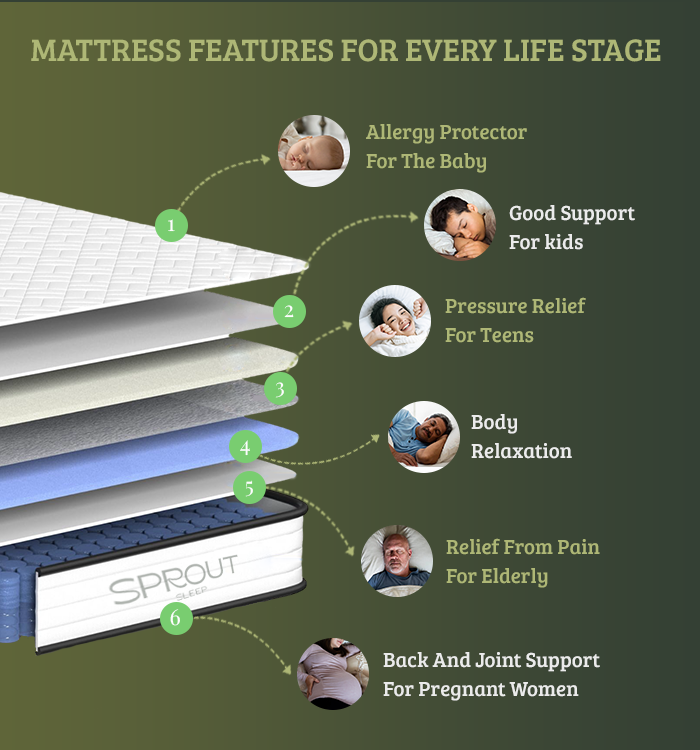Unlocking Restful Sleep:
Overcoming Barriers and Building Healthy Habits
Struggling to fall asleep or stay asleep? Many common habits and environmental factors can interfere with your ability to get the rest you need. In this section, you’ll discover simple strategies to improve your sleep, overcome barriers, and create the ideal environment for a restful night—with the right mattress as your foundation.
1. Healthy Sleep Practices for Restful Nights
What Works:
- Stick to a consistent bedtime and wake-up schedule to align with your natural circadian rhythm.
- Create a wind-down routine before bed to help your mind and body prepare for sleep.
Mattress Connection: A comfortable and supportive mattress reduces physical discomfort, making it easier to establish consistent sleep habits.
5-Senses Tip – SIGHT: Avoid screens at least an hour before bed. Blue light suppresses melatonin production, making it harder to fall asleep. Try dimming your room lights instead to signal to your body that it’s time to relax.
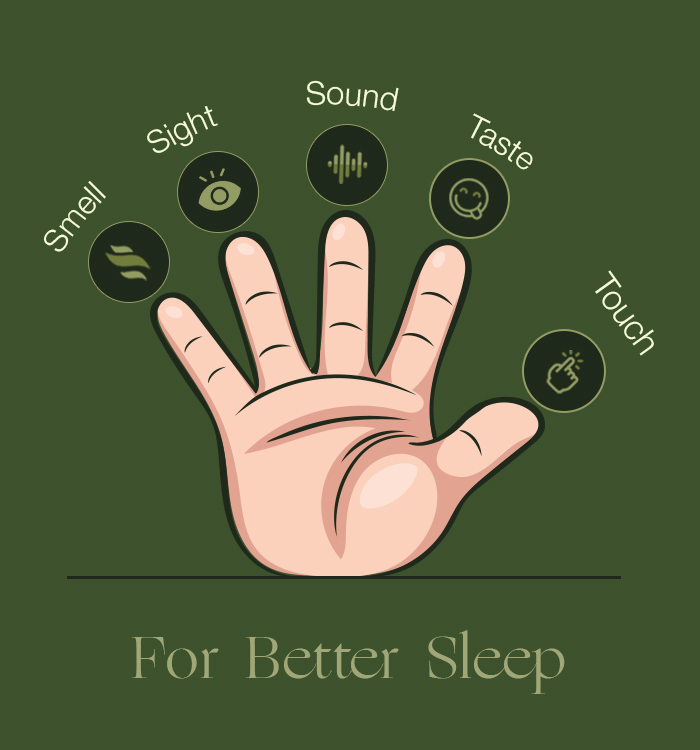
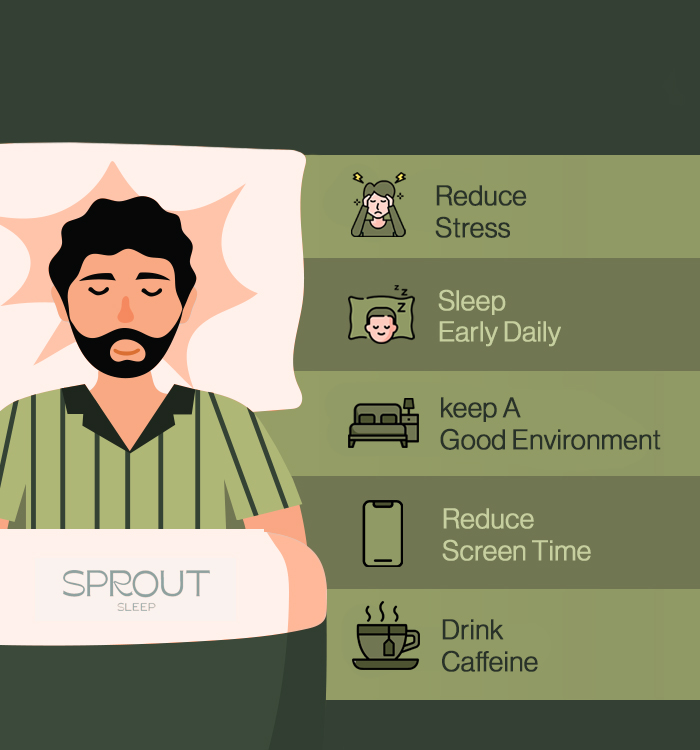
2. Common Sleep Barriers and How to Address Them
Caffeine and Diet: Sleep cycles consist of several stages, each serving a specific purpose:
- Caffeine can stay in your system for up to 8 hours, so avoid it in the afternoon or evening.
- Heavy meals before bed can cause discomfort and disrupt your sleep.
Stress and Racing Thoughts: Practice relaxation techniques, such as journaling or deep breathing, to calm your mind before bed.
Mattress Connection: Pressure-relieving mattresses can help ease tension and create a calming effect for stress-prone sleepers.
5-Senses Tip – TASTE: Swap your evening coffee for a calming herbal tea, like chamomile or valerian root, to soothe your mind and promote relaxation.
3. Optimizing Your Bedroom for Better Sleep
The Ideal Environment
- A cool, dark, and quiet room is key to uninterrupted sleep.
- Remove clutter to create a more peaceful space and reduce stress.
Mattress Connection: Breathable and temperature-regulating mattresses help maintain an ideal sleep temperature, while motion-isolating designs minimize disruptions from restless bed partners.
5-Senses Tip – TOUCH: Layer your bed with temperature-regulating bedding, like breathable cotton sheets and lightweight duvets, to stay cozy without overheating.
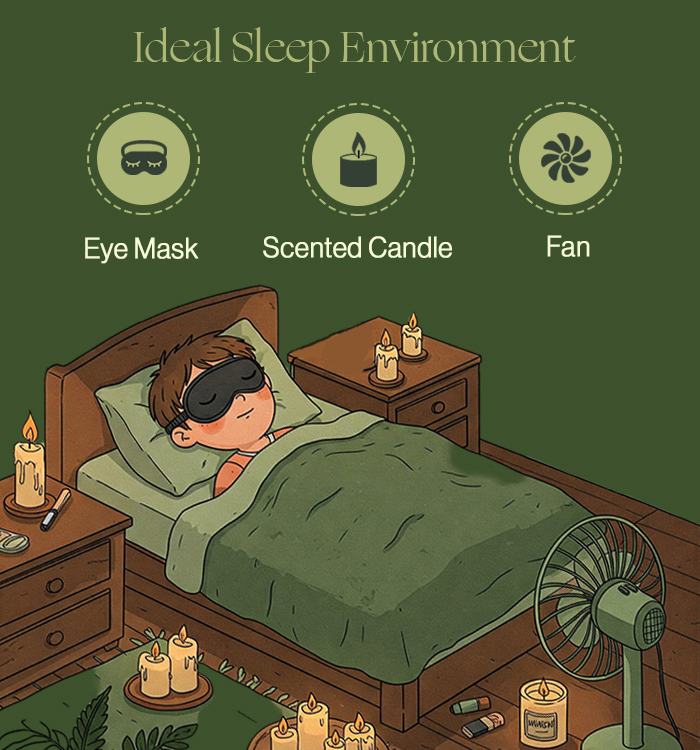
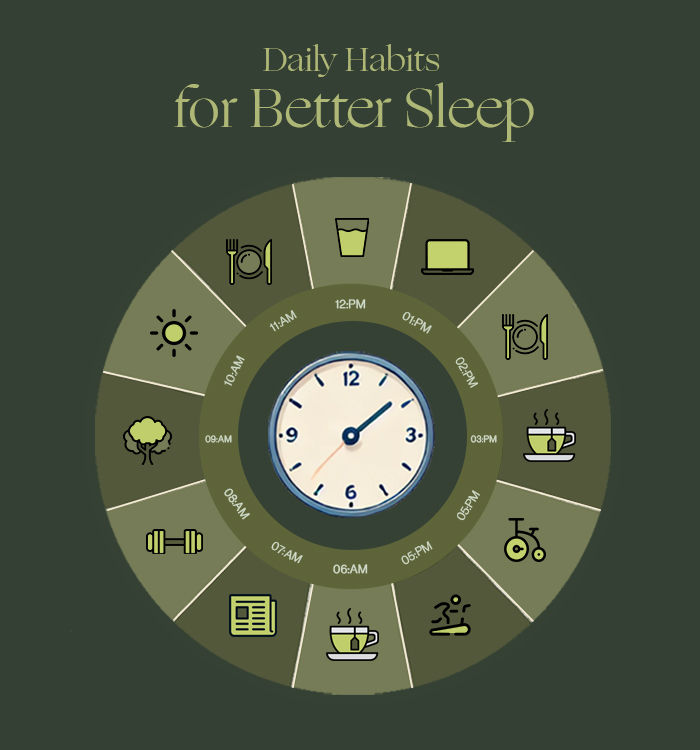
4. Creating a Calming Sleep Atmosphere with Scents
Aromatherapy for Relaxation:
- Lavender, chamomile, and eucalyptus are natural scents known for their calming properties.
- Air purifiers can also enhance air quality, contributing to a fresher, more comfortable sleep environment.
Mattress Connection: Hypoallergenic mattresses reduce allergens, making your sleep space healthier and more inviting.
5-Senses Tip – SMELL: Use a linen spray or diffuser with calming essential oils to create a soothing scent that helps you relax as you drift off to sleep.
5. Small Lifestyle Changes for Big Sleep Gains
Exercise and Sleep: Regular physical activity improves sleep quality and helps you fall asleep faster.
Hydration Balance: Avoid drinking large amounts of water close to bedtime to minimize nighttime disruptions.
Mattress Connection: A supportive mattress tailored to your body type can ease aches and pains, helping you wake up feeling refreshed.
5-Senses Tip-SOUND: Use white noise machines or soft, calming playlists to mask external noises and create a tranquil auditory environment.
